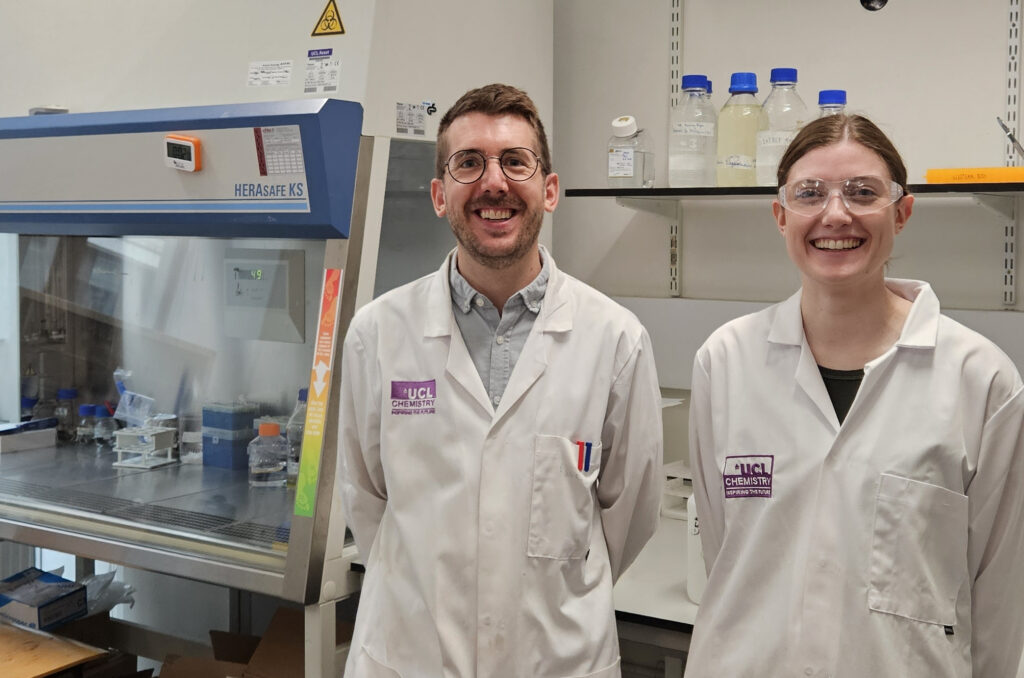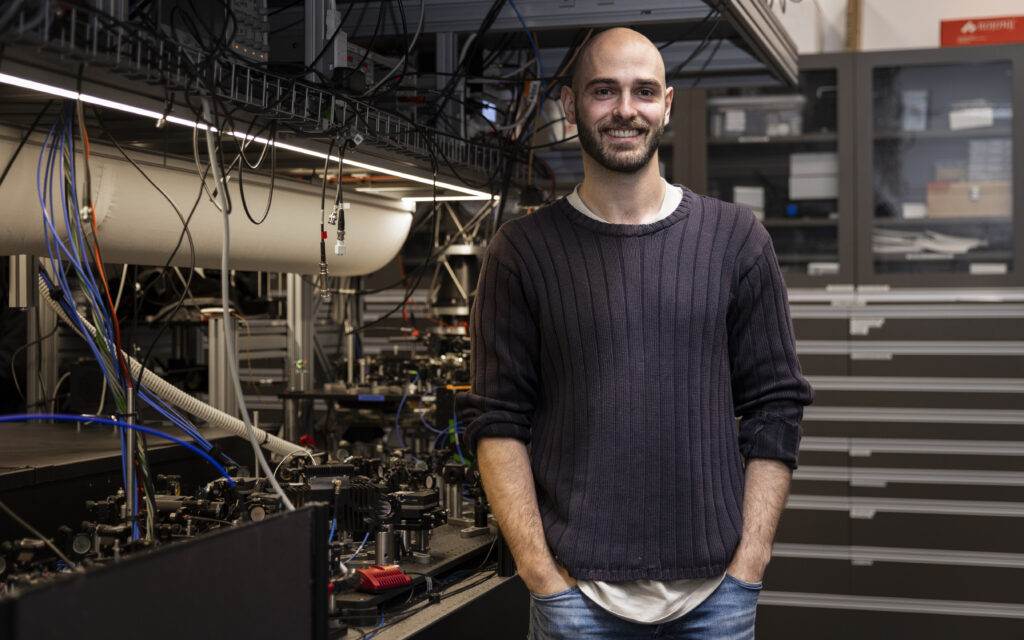Researchers working at the forefront of gravitational-wave detection have unveiled a transformative segmented adaptive optics technology that could reshape the future of laser-interferometric astronomy. In our earlier news report, we explored how this innovation; capable of precisely reshaping LIGO’s 40 kg mirrors using patterned thermal radiation, addresses one of the most stubborn limitations in next-generation observatories: the fragile balance between megawatt-level laser power and quantum-squeezed light. Now, we sat down with the team behind this breakthrough to examine the physics, engineering, and long-term vision that brought the concept to life.
In this extended conversation, Professor Jonathan Richardson from the University of California walks us through the optical and thermomechanical constraints that motivated the development of FROSTI, the non-imaging thermal actuator system designed to correct higher-order wavefront distortions with unprecedented precision. We also discuss how this technology could reduce LIGO’s quantum noise floor, expand its astrophysical reach, and lay the groundwork for Cosmic Explorer’s future 40 km facilities—ushering in an era of precision gravitational-wave science in which millions of black hole and neutron star mergers may be observed across cosmic time.
To learn more about Design details of the new technology see below:
Rosauer, T., Cao, H. T., Bhattacharya, M., Carney, P., Johnson, L., Levin, S., Liang, C., Ma, X., Martin Gutierrez, L., Padilla, M., Tao, L., Wilkin, A., Brooks, A., & Richardson, J. W. (2025). Demonstration of a next-generation wavefront actuator for gravitational-wave detection. Optica, 12(10), 1569. https://doi.org/10.1364/OPTICA.567608
To learn more about the Astrophysical details of the technology see below:
Tao, L., Bhattacharya, M., Carney, P., Gutierrez, L. M., Johnson, L., Levin, S., Liang, C., Ma, X., Padilla, M., Rosauer, T., Wilkin, A., & Richardson, J. W. (2025). Expanding the Quantum-Limited Gravitational-Wave Detection Horizon. Physical Review Letters, 134(5), 051401. https://doi.org/10.1103/PhysRevLett.134.051401
The following interview is presented unedited to preserve the technical clarity and intent of the original responses, offering an unfiltered view into how the team combined optical physics, thermal engineering, and non-imaging design principles to prototype a new class of adaptive optics for gravitational-wave detectors.
Acknowledgment by Prof. Jonathan Richardson: This work was supported by the National Science Foundation (NSF) under Award Nos. PHY-2110348 and PHY-2409496. Additional support was provided by LIGO Laboratory under Advanced Detector Technology Research (ADTR) Initiative No. LIGO-M2200050. LIGO was constructed by the California Institute of Technology and Massachusetts Institute of Technology with funding from the NSF, and is operated by LIGO Laboratory under cooperative agreement PHY-1764464. Any opinions, findings, and conclusions or recommendations expressed in this material are those of the author and do not necessarily reflect the views of the National Science Foundation.
How did your background in physics and optics guide the decision to apply segmented adaptive optics to gravitational-wave detectors, and what gaps or constraints in current instruments motivated this innovation?
To see farther into the distant universe, tomorrow’s gravitational-wave detectors will require an incredible amount of laser power—1.5 megawatts, almost five times higher than what LIGO can reach today. They will also require highly “squeezed” quantum states of light, where quantum correlations are introduced between individual photons to suppress fluctuations of the detector’s readout signal. The problem is that, under the limits of today’s technology, high levels of laser power and high levels of squeezing are almost mutually exclusive. Squeezed quantum states of light are extremely susceptible to aberrations in the optical system, which create loss. As the laser power is raised higher, the optics absorb more and more power, causing them to distort which reduces the achievable squeezing. The new adaptive optical technology we have developed is designed to enable both of these at once, by precisely reshaping the surfaces of LIGO’s main mirrors in a contactless way. It does this by collecting thermal radiation from an internal heater source and reshaping it into a complex heating pattern that is projected onto the mirrors’ surfaces.
The system you propose more precisely corrects wavefront error in the core LIGO optics. How do those improvements translate into better strain sensitivity or angular localization for gravitational-wave detectors?
We assessed the transformative astrophysical impact of this technology in a preceding paper (https://doi.org/10.1103/PhysRevLett.134.051401). In simulated projections for LIGO A+, we found that our initial concept of this technology can reduce the quantum noise floor of the LIGO detectors by up to 20% from 200 Hz to 5 kHz, corresponding to an additional 4 Mpc in the sky-averaged detection range for binary neutron star mergers. In the longer term, this work lays the foundation for one of the key technology improvements essential to fully utilize the scientific potential of the existing 4 km LIGO facilities, to observe black hole merger events to much earlier times in the history of the Universe (past a redshift of 5), and opens an R&Dpathway towards a next-generation 40 km gravitational-wave observatory in the U.S., Cosmic Explorer.
Could you describe in detail the hardware architecture: wavefront actuator design and how you manage real-time feedback under astronomical conditions?
LIGO already has some ability to correct the surfaces of its main 40 kg mirrors with devices known as “ring heaters.” These can change the overall radius of curvature, or the focal length, of the mirrors. However, the surface deformation caused by the laser beam heating is not purely a focal length change. It also includes more complex-shaped, higher-order deformations which become limiting as we increase the laser power. Our new technology is designed to zero this residual higher-order error. It achieves this by projecting a complex heating profile onto the front surface of the mirrors, which is produced using highly stable thermal radiation sources packaged inside a non-imaging reflector. It is the first prototype for an entirely new type of approach leveraging non-imaging optical principles, which has never been used in gravitational wave detection before. FROSTI is the acronym we coined for this instrument, which stands for FROnt Surface Type Irradiator. Although the name “FROSTI” may seem strange for a device that adds heat to LIGO’s mirrors, it does so in a way that restores the mirrors to their ideal cold optical state. The FROSTI actuators will initially be used open-loop in the LIGO detectors, due to the long thermal time scale of their 40 kg optics (over 10 hours), but we are actively researching the potential for closed-loop control in next-generation detectors.
The proposal considers retrofitting existing detectors. What are the main practical challenges (alignment, vibration isolation, calibration) in integrating your adaptive module into legacy observatories?
One of the key technical challenges is that the intensity of this heating profile must be extremely stable, since fluctuations in the incident heating power will buffet the mirrors and create displacements mimicking gravitational waves. We overcome this challenge by using highly stable thermal radiation sources, rather than lasers, to produce the heating pattern. Another is that the total weight of the units must be kept very small, as they will be retrofitted onto the existing suspension cage framing of LIGO’s mirrors. Although this first prototype is 25 kg, a production design known as “FROSTI Lite” is under development within LIGO which reduces the mass to only 6 kg, by removing all excess material from the non-imaging reflectors.
How do you anticipate the performance benefits of this system will evolve as gravitational-wave sources become more common and require better electromagnetic follow-ups or localization?
The breakthrough in adaptive optical technology reported in our latest paper will help to expand the world’s gravitational-wave view of the Universe by a factor of ten in the next decade. A future upgrade of the LIGO detectors, known as A# (pronounced A-sharp), is envisioned to be a pathfinder that will demonstrate the next-generation technologies essential for Cosmic Explorer, including FROSTI. The FROSTI technology we develop for LIGO A# can be scaled up for the larger 400 kg mirrors of Cosmic Explorer, so we expect the technology of Cosmic Explorer to look very similar to that first deployed in LIGO A#. This is key to enabling the transition of gravitational-wave astronomy from an initial discovery era, which began in 2015 when LIGO detected the first gravitational waves from two coalescing black holes, to an era of precision science in which millions of black hole and neutron star mergers are observed across cosmic time with high fidelity. These observations will drive transformative discoveries about the nature of the Universe and our place within it.
Looking ahead, what are your plans for prototyping, demonstrations, or collaborations with gravitational-wave observatories, and what metrics will you use to validate the system’s real-world impact?
The technology reported in this paper is highly scalable, in that the same technique can be used to design devices that produce even more complex optical corrections. The first prototype is a proof of concept that produces a relatively simple correction, in terms of the technology’s ultimate capabilities. This correction is beneficial for LIGO but it still does not zero the optical distortions precisely enough for LIGO A# and Cosmic Explorer, at least for the main input mirrors. We are continuing to prototype designs capable of handling even more complex optical aberrations, guided by finite element simulations of the optics’ residual wavefront errors under a given heating pattern. These simulations will then be experimentally confirmed through full-scale prototypes built and tested following the same procedures as described in our recent paper (https://doi.org/10.1364/OPTICA.567608).

Hassan graduated with a Master’s degree in Chemical Engineering from the University of Chester (UK). He currently works as a design engineering consultant for one of the largest engineering firms in the world along with being an associate member of the Institute of Chemical Engineers (IChemE).



